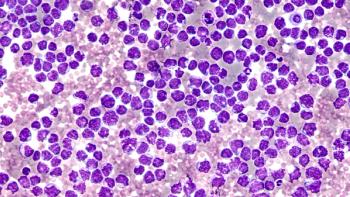
How Do Potential COVID-19 Vaccines Compare?
In the span of a few weeks, Pfizer, Moderna, and AstraZeneca all announced positive results from their respective coronavirus disease 2019 (COVID-19) vaccine trials, with Pfizer submitting to FDA for an emergency use authorization (EUA) on November 20.
In the span of a few weeks,
However, each vaccine is distinct when it comes to efficacy, storage, dosing, and production. In addition, according to the
Regardless of which vaccine gets approved, the
Pfizer/BioNTech
On November 9, Pfizer and BioNTech were the first companies to
The vaccine is administered in 2 doses 3 weeks apart while protection is achieved 28 days after the first shot. The EUA submission included safety data on about 100 children aged 12 to 15. Roughly 43% of global trial participants and 30% of US participants have racially diverse backgrounds, and 41% of global and 45% of US participants are aged 56 to 85. Depending on an approval date, the immunization could be available for high-risk US populations by the middle to end of December 2020.
The vaccine, BNT162b2, contains messenger RNA (mRNA) which is thought to provoke the immune system to fight the virus, but requires a storage temperature of –94° Fahrenheit (F). This could lead to logistical concerns during distribution as most doctors’ offices do not have freezers that go that low. The vaccine needs to be kept
“Based on current projections, the companies expect to produce globally up to 50 million doses in 2020 and up to 1.3 billion doses by the end of 2021; the companies will be ready to distribute the vaccine within hours after authorization,” a joint
A decision on the EUA could be made as early as December 10, CNN
Moderna
Following the Pfizer/BioNTech announcement, Moderna reported preliminary results from its COVID-19 vaccine trial on
The vaccine is similar to Pfizer’s in that it also includes mRNA, but no mRNA vaccine has been approved or marketed for any disease, The New York Times
Although both candidates are composed of mRNA, Moderna’s vaccine differs significantly from Pfizer’s in that it can be stored in –4° F (equal to most home or medical freezer temperatures) for up to 6 months. In addition, the vaccine remains stable at 36° to 46°F, the temperature of a standard home or medical refrigerator, for 30 days. It will also last for 12 hours at room temperature. The 2 vaccines’ temperature requirements differ due to different proprietary formulations of fat used to encase and protect the mRNA.
Moderna plans to submit an EUA to the FDA in the coming weeks. Should the vaccine gain approval, Moderna estimates it will have approximately 20 million doses ready to ship in the United States by the end of 2020. In 2021, the company hopes to manufacture between 500 million and 1 billion doses globally.
The Biomedical Advanced Research and Development Authority (BARDA) “is supporting the continued research and development of mRNA-1273 with $955 million in federal funding,” according to a Moderna
AstraZeneca and Oxford University
AstraZeneca is the latest pharmaceutical company to release
By the end of 2020 the company hopes to have 200 million doses ready, nearly 4 times as many as Pfizer plans to develop. AstraZeneca also estimated nearly 700 million doses of the vaccine could be ready globally by the end of the first quarter of 2021. Overall, the vaccine is cheaper than Pfizer's and Moderna’s as it uses more conventional technology. Specifically, it “uses a modified version of a chimpanzee cold virus to deliver instructions to cells to fight the target virus,” Reuters reported. It can also be transported and stored at normal refrigerator temperatures (36° to 46° F).
AstraZeneca has set the price at around $2.50 a dose compared with Pfizer’s $20 and Moderna’s $15 to $25, the Associated Press
However, the preliminary data did not reveal how many individuals of the 131 cases of COVID-19 in the study received the smaller initial dose to form the basis of the 90% efficacy claim. Data presented thus far did not meet requirements set by US regulators. But the company plans to prepare regulatory submission of the data to authorities around the world for early approval. AstraZeneca also hopes to seek an emergency use listing from the World Health Organization so the vaccine can become available in low-income countries.
Newsletter
Stay ahead of policy, cost, and value—subscribe to AJMC for expert insights at the intersection of clinical care and health economics.













































